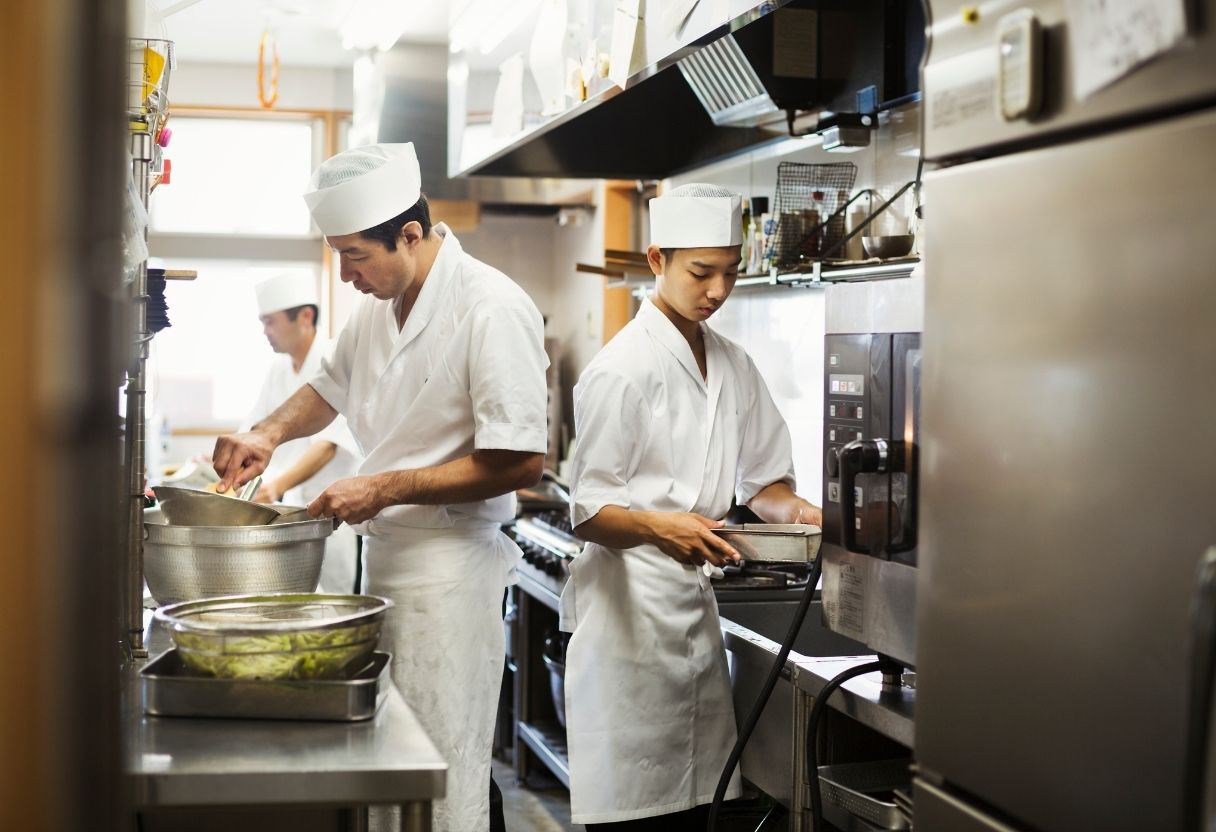Streamline Restaurant Operations Using Remote Temperature Monitors

Read on to learn about how a remote temperature monitor can improve restaurant operations, profits, and quality assurance.
Monitoring restaurant equipment temperature is an important procedure to avoid costly and reputation-threatening food-safety incidents. Nevertheless, most restaurants conduct manual temperature checks, a system that is both labor-intensive and often inaccurate. As such, there is a new option to streamline restaurant operations: remote temperature monitoring powered by LoRaWAN and cellular data.
Why manual temperature monitoring is ineffective and inefficient
The current manual temperature monitoring process is subject to employee errors and pencil whipping. Pencil whipping occurs when employees record temperature without actually checking - resulting in avoidable product loss. This is likely to occur if an employee forgets to close a cooler or a delivery team improperly shuts a walk-in freezer.
In this scenario, restaurant operators must throw out valuable inventory due to unsafe food temperatures. Furthermore, if an employee fails to properly record temperature data, it becomes impossible for a restaurant operator to ensure food safety.
Even if employees correctly log temperature data, the incurred labor costs are unnecessary for a repetitive task. On average, restaurant employees spend 20 minutes hours per day per piece of equipment on manual temperature monitoring. Instead, this time could instead be spent on more valuable customer-facing tasks.
Additionally, manual temperature monitoring is incomplete as it only provides a temperature snapshot for a specific time. Temperature spikes that occur in between temperature recordings often go unnoticed. This places restaurants at risk of losing profits from equipment breakdowns which result in restaurant downtime events. In more extreme cases, temperature spikes can also result in outbreaks of foodborne illness.
How does remote temperature monitoring work?
In a 21st century powered by interconnected technologies, remote temperature monitoring offers restaurant operators a simple way to increase profits, reduce manual tasks, and guarantee food quality.
Remote temperature monitoring connects wireless temperature sensors with the cloud, leading to temperature data instantly appearing on a user’s computer, phone, or tablet. With data analytics software, such as GlacierGrid, operators are automatically alerted about elevated temperatures, and upper management becomes notified when incidents are deemed serious.
With long-range (LoRa) low-power wide-area network technology replacing WiFi, and cellular data replacing Bluetooth, poor signal in restaurants is no longer a concern. In real-time, restaurant operators consistently have access to temperature data from anywhere in the connected world with LoRaWAN and cellular data.
Sensors are set up in ten minutes or less
Temperature sensors can be placed in various locations, ranging from low boys, walk-ins, ambient food storage, or walk-in freezers. Whether storing valuable meat or temperature-sensitive wine, remote monitoring offers peace of mind to restaurant operators in charge of expensive inventory.
Sensors can be mounted in mere minutes with zip ties. Once all sensors are connected to a single hub, they are immediately ready to transmit data to the cloud.
Yes, it’s that simple. In fact, once sensors are set up, restaurant operators and employees will never again have to check equipment temperatures.
How remote a temperature monitor can streamline restaurant operations
With remote temperature monitoring, restaurant operators can create a store-specific chain of command to streamline restaurant operations. To begin, users set temperature ranges for specific pieces of equipment, ensuring that product is kept at correct temperatures. Then, to maximize the efficacy of remote temperature sensors, operators can choose to alert different employees of temperature spikes.
For example:
- When ‘Cooler #1’ is above 32°F for thirty minutes, alert James, Waiter #1.
- When ‘Cooler #1’ is above 32°F for forty-five minutes, alert Keisha, Floor Manager.
- When ‘Cooler #1’ is above 32°F for one hour, alert Tyler, Owner.
With this automated alert system, restaurant operators can be sure that temperature spikes are responded to in an efficient and timely manner. As a result, valuable food can be saved and equipment malfunctions are caught early.
Remote temperature monitoring in action
When Skyline Chili bought GlacierGrid, they immediately saw value. After implementing GlacierGrid’s remote temperature monitor in six locations, they received alerts regarding elevated temperatures, encouraging them to call an equipment maintenance team.
Skyline Chili’s coolers had compressor issues, but the quick response time saved Skyline Chili’s inventory before spoiling. In total, Skyline Chili saved $18,000, a 15x ROI, and subsequently expanded GlacierGrid into their 33 corporate locations.
About GlacierGrid
At only $12.50 per month per sensor, GlacierGrid offers a temperature monitoring system powered by LoRaWAN and cellular data that is easy to set up and immediately streamlines restaurant operations.
To experience for yourself how GlacierGrid can help your business run smoother, click below to buy directly.







